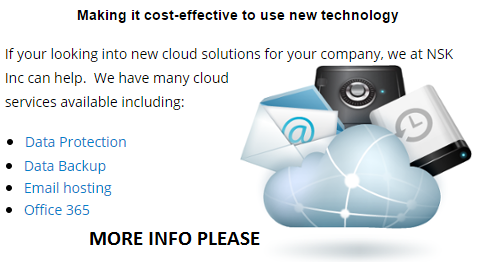
There is no better asset to an individual trying to reach a conclusion than a fact. The same is true for a decision maker within a business. Management, finances, marketing, sales, development, and other operational details require vital decisions to be made that will play a direct role in future success. Historically, facts have not always been fully available to business decision makers. As a result, they have had to reach conclusions founded on intuition. They have had to ask themselves what results they expect to see when influencing a business variable using solely their own previous knowledge and experiences. While this is a skill that can be developed, it forces assumptions to be made on the part of the decision maker. Fewer facts are utilized, and the context of a particular situation is never fully recognized. The results of an action taken become far less predictable. Consequently, as information supplies both fact and context, it is important for a business to develop a means of acquiring and distributing relevant information to all decision makers. Using facts, these individuals are able to make a stronger argument to themselves and their coworkers as to why a particular conclusion reached is also the most valuable. It is this acknowledgement that highlights the importance of a versatile information system and demonstrates the potential business value of actionable data.
Information systems have drastically developed since their ambiguous inception. These systems began as an institution as simple as the pen and paper. As transactions occurred, documents accumulated, and success was measured, the earliest of businesses had to identify a way to manage this information while keeping it available. The file cabinet became a breakthrough invention, but computing devices changed everything. Data became capable of being systematically organized and queried, and the quality of the information that followed began to increase. Businesses acquired the ability to ask questions and receive factual answers. Today’s information technology grants even greater possibilities. All kinds of data are automatically recorded as activity takes place, and reports are generated that accurately illustrate the context in which a business is operating. Although this information aids in the action that a business takes externally, information technology completely changes internal operations as well. Employees generate information in many forms including documents, spreadsheets, and presentations, and the ease at which this information can be shared plays a large role in project management, operational collaboration, and inter-department unification. Additionally, the movement of information systems into the cloud gives an employee access to exactly what they need to know while keeping a business consolidated. It is the collective information system that keeps facts available and decisions optimized.
The establishment of end-user information systems (EUIS) has become an additional novelty for the distribution of facts. As information systems are integrated with the capabilities of off-site servers, online retail, web applications, and the internet in general, data are constantly being recorded. End-user information systems ensure that once these data are converted into valuable information, it will then be delivered to the correct user in the most meaningful format. Marketers can monitor their customers and sales in order target the right consumers with the most relevant offers. Financial monitors and accountants can observe transactions, profit, tax compliance, inventory, and stock in order to maintain economic well-being. Operations managers and industrial engineers can keep track of efficiency and production in order to optimize performance. Department managers and supervisors can share business intelligence with subordinate employees and maintain a proficient schedule. Product developers can understand consumer perception of their good or service in order to make adequate changes to composition or brand. With informed employees at every level of a business operation, the path to success relies far more upon strategy than instinct. If each user of an information system is given the exact facts that they need in order to reach a cognizant conclusion, the results of a decision are more likely to mirror a decision maker’s expectations.

As information systems move into the cloud and appear to be less and less tangible, the information technology that truly makes everything possible may be ignored. While web application software, cloud services, and virtual servers are certainly information technology in themselves, it is important to recognize the hardware and firmware solutions that are being utilized off-site. Although fewer of the concrete components of an information system are being purchased and employed at a business’s actual location, the tangible IT that operates behind-the-scenes truly determines the extent of what processes a business’s information system is capable of performing. Data cleansing, population, and storage as well as information delivery all rely upon the computing power of the entire information infrastructure. The cloud is intentionally marketed as an abstraction because of the perceived freedom granted to the consumer, but the data, applications, and other cloud service components are in fact living on servers that are maintained in a controlled and secure setting. These intricate servers allow businesses to execute complicated information operations. This observation among others is a vital one to make as it acknowledges the significance of finding the right information technology to be the foundation of one’s entire information system. Furthermore, noting this imperative reiterates the value of the information technology industry as it continues to evolve in order to make more information management techniques possible. Information technology that facilitates communication within an information system is an additional undertaking. Using the most compatible information options for one’s own organization creates the factual and aware business environment that promotes prosperous collaboration, sound decision making, and optimal use of resources.
When exploring modern information systems, it would be a mistake not to discuss the developing applications of Big Data technology. The internet has created a world that includes ceaseless data generation. While the applications of this reality may be invaluable to the global context, the business opportunity is additionally notable. The exploration of data of an immeasurable size allows trends to be identified that would otherwise remain invisible. Marketers can better group their customers and make them unprecedentedly relevant offers. Market occurrences can be predicted before they even happen. In fact, one dating site has even released a list of seemingly irrelevant questions to ask a prospective partner that statistically imply the presence of other traits. In addition to being evidently practical, Big Data applications are creating real results for data-driven businesses. The MIT Center for Digital Businesses conducted a study that statistically verifies that data-driven businesses are performing better than others in terms of impartial measures of financial and operational success. Big Data allow businesses to access distinct information that increases their competitive edge and cleans up internal efficiency. Information systems work with these data to interpret and deliver knowledge to business contingents. Nonetheless, although Big Data do share objective facts with a business, interpreting the available information is an improvable skill. This may not be intuition exactly, but even with the facts available, arriving at the correct conclusions requires practice.
The complex solutions that have been developed to make information distribution into a practical matter should be celebrated. The road from the file cabinet to the cloud required consistent innovation and attention. Of course, it should be acknowledged that as data increase in size and information is more heavily exchanged, security concerns naturally arise. Information is valuable to more than the business that collected and utilized it. Additionally, the internet makes both Big Data and system vulnerabilities into a possibility. These concerns do not remain unaddressed, however, and information technology as an industry regularly seeks to address the security of the systems that they comprise. The advantages remain present. In a logical argument, it is important to make sure that the facts or premises being acknowledged directly lead to the conclusion reached. Regardless, although not necessarily arrived at illogically, a conclusion is useless if the premises of the argument are not accurate. Information systems promote the presence of factual premises leading to strong conclusions and constructive decisions.
Sources
http://smallbusiness.chron.com/importance-management-information-system-5256.html
https://www.executiveboard.com/blogs/maximize-the-business-value-of-information/
http://tdan.com/information-management-a-key-for-creating-business-value/12829
http://www.privacilla.org/business/businessandinfo.html
http://smallbusiness.chron.com/impact-information-technology-small-business-5255.html
https://hbr.org/2012/10/big-data-the-management-revolution/ar
http://www.floridatechonline.com/resources/information-technology/information-systems-vs-information-technology/#.VafgYKRVhBc
Images
http://www.ccny.cuny.edu/is/images/infobanner.jpg
http://us.wacom.com/~/media/WTC/Images/Interests/Business/710x440_GIS_Aslot.jpg?mw=780

